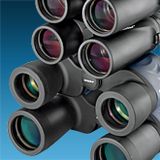
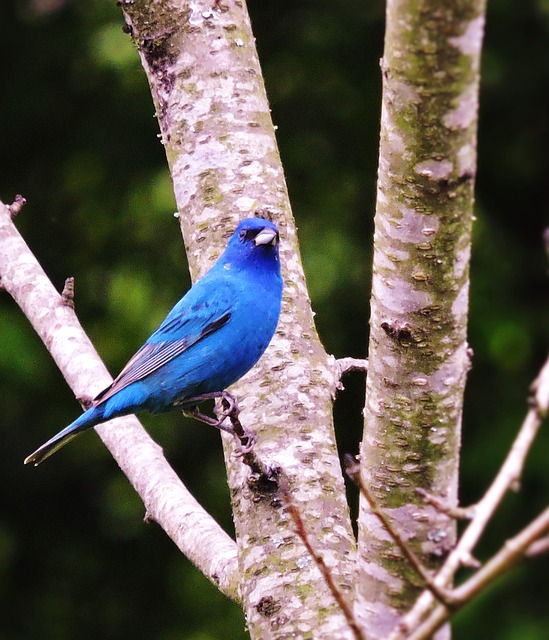 Would you like to take part in the fastest growing recreational activity in the United States? Just pick up a pair of binoculars and point them at the nearest ball of feathers.
Would you like to take part in the fastest growing recreational activity in the United States? Just pick up a pair of binoculars and point them at the nearest ball of feathers.
Yes, bird watching (birding) flies highest among the flock of fastest growing recreational activities in the US.
"Why bird watching?", you may ask.
Here are a few of its allures:
- a great activity in your backyard during a "staycation";
- beautiful scenery;
- tranquility;
- a chance to get away by yourself or a reason to get together with a few friends;
- a little exercise;
- a chance to visit new places;
- a motivating focus for your outings;
- a chance to learn a lot or a little;
- a large established and (usually) friendly community of birders; and finally,
- the great aesthetic pleasures given by the birds themselves.
Whether you become a birding fanatic or just dabble around the edges of the avian community, once you take that first bird hike, you will be smitten.
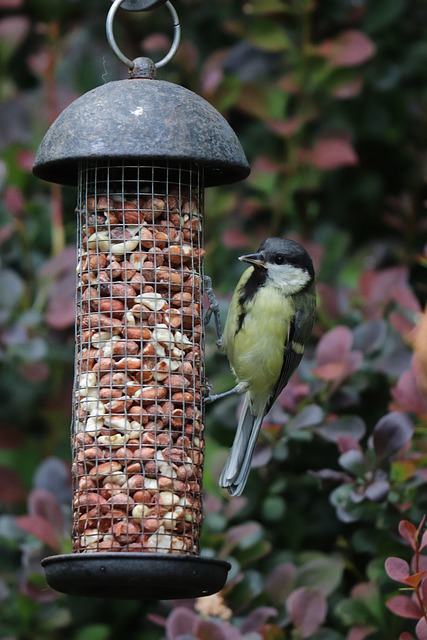 One of the best things about becoming a birder is how easy it is. Many people start in their own backyards. Bird-friendly landscaping and a bird feeder or two often result in attracting several different kinds or species of birds. Every outdoor environment hosts at least a few birds. The local, state, or national parks host dozens or hundreds of different species.
One of the best things about becoming a birder is how easy it is. Many people start in their own backyards. Bird-friendly landscaping and a bird feeder or two often result in attracting several different kinds or species of birds. Every outdoor environment hosts at least a few birds. The local, state, or national parks host dozens or hundreds of different species.
You will need a pair of binoculars. Binoculars enable a person to see the brilliant red cheek stripe of the red-shafted flicker, or the crest of feathers at the top of the head of the oak titmouse. Binoculars bring forth the exquisite streaked and scalloped patterning of the California quail, which can otherwise appear as a comical brown tufted orb skittering between the bushes.
Choosing Binoculars
Purchasing binoculars might seem a bit daunting — there are so many to choose from.
Don't despair!
First, take an honest look at your budget. The price range of binoculars is from twenty-five dollars to several thousand dollars. Most of that price difference comes from the quality of the optics (glass) &nmdash; its light-gathering ability and precision at transmitting the light. It is a good idea to have the optics multi-coated. The coatings reduce glare on the subject and eliminate the "halo effect" that can occur without the coatings. A serviceable pair of binoculars can be had for between $40 and $300.
If you need help choosing, try our Binocular Product Wizard!
Or speak with one of our product specialists via phone at 800-447-1001, send us an email at sales@telescope.com, or contact us via chat.
Binoculars are labeled with two numbers. For example, they may read 8x40 or 10x50. The first number refers to the magnifying power (the object viewed looks 8 or 10 times closer than it actually is). The second number refers to the front objective lens size in millimeters. A ratio of 1 to 5 between the two numbers (the magnification and the lens diameter) allows in the optimal amount of light for a given magnification. The 8x40 binocular is probably the most popular variety, but 7x35 or 10x50 also work for birders.
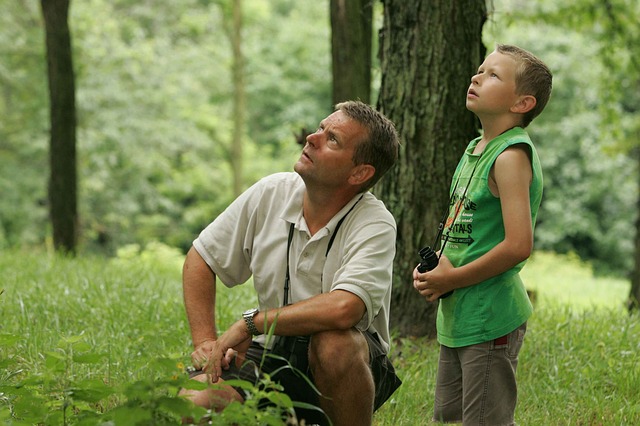 When choosing binoculars, make sure that they are comfortable for you. You will spend much time with your arms up, holding the binocular to your face. The weight of your binocular is an important consideration. If the binocular is too heavy, not only will your shoulders get sore, but also your trembling will destabilize the image you see. Also, check the minimum focusing distance of the binocular. Some models won't focus on an object 10 to 15 feet away, which may be desirable as some birds allow close approach.
When choosing binoculars, make sure that they are comfortable for you. You will spend much time with your arms up, holding the binocular to your face. The weight of your binocular is an important consideration. If the binocular is too heavy, not only will your shoulders get sore, but also your trembling will destabilize the image you see. Also, check the minimum focusing distance of the binocular. Some models won't focus on an object 10 to 15 feet away, which may be desirable as some birds allow close approach.
Identifying Birds
A field guide to the birds of your area is indispensable in sorting out the different bird species. There are many field guides to choose from. Some guides just list the more common species of the area or specialize in certain bird groups, e.g., waterbirds or raptors. Guides with fewer species of birds have the advantage of not overwhelming the novice with large numbers of birds, but there is nothing more frustrating than getting a good look at a beautiful bird and not being able to find it in the guide book.
A comprehensive field guide such as National Geographic Society's Field Guide to the Birds of North America (4th ed.) or The Sibley Guide to Birds (North America) may seem a bit complex at first but all the birds are there. This, of course, doesn't mean that you will be able to identify every bird that you see.
There is a steep learning curve when identifying birds. Don't let this frustrate you. Even the expert birders can't identify every bird they see.
It is a good idea to start by becoming familiar with the most common birds in your area and slowly expanding your range of bird familiarity. You will slowly learn to identify more and more birds. Begin with noting the overall size and shape of the bird, its beak shape, plumage coloration (it is important to learn the parts of the bird and locate these colors). You will also start to notice where you find them (habitat), the seasons or months that they are present, their behaviors, their sounds, and much more. These observations in turn may spark a curiosity about where they come from or are going to (migratory patterns) or if they nest in your area. Now your field guide becomes a resource for more than just identification.
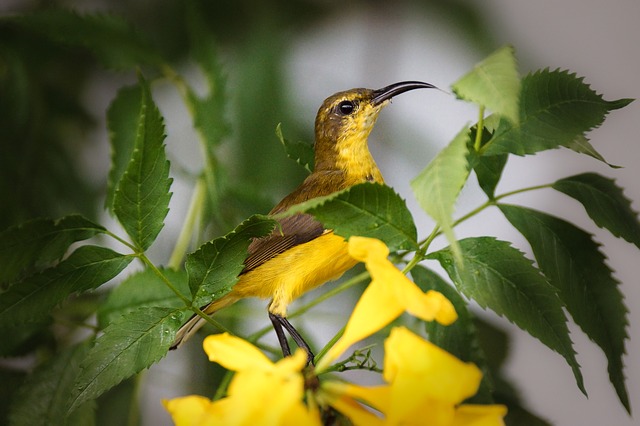 The reason that most of us watch birds is because we get great pleasure from them. Nothing can drain the pleasure from a bird hike more than being lost, cold, hungry or injured. Know where you are going and plan your hike. Trail maps are very helpful. Always bring enough water and a few snacks to tide you over in case the birding is so good that you decide to stay on the trail a little longer than you expected. Always expect the unexpected when it comes to weather. Dress in layers and wear comfortable, supportive shoes. It is definitely true that a few minutes of planning and forethought can go a long way in assuring a safe and enjoyable birding experience.
The reason that most of us watch birds is because we get great pleasure from them. Nothing can drain the pleasure from a bird hike more than being lost, cold, hungry or injured. Know where you are going and plan your hike. Trail maps are very helpful. Always bring enough water and a few snacks to tide you over in case the birding is so good that you decide to stay on the trail a little longer than you expected. Always expect the unexpected when it comes to weather. Dress in layers and wear comfortable, supportive shoes. It is definitely true that a few minutes of planning and forethought can go a long way in assuring a safe and enjoyable birding experience.
A benefit of bird watching is that it tends to slow people down. Although many birds are in plain sight, there are many more that are tucked away in bushes and trees. The pace that you might set for a "normal" early morning or late afternoon (the best times to see many birds) hike would result in a dismally low bird count. A birder is quiet, slows his/her pace and focuses his/her senses. The first hint of a bird's presence may be a sound or a slight movement at the edge of vision.
And birds aren't the whole of a birder's experience. Heightened senses often result in our becoming aware of the natural beauty we often overlook. It would not be unusual for a birder to spend an entire morning covering a mile-long stretch of a rich habitat.
With experience you will automatically lift your binoculars into exactly the right place to spot that chickadee in the pine tree across the trail. And there will be fewer and fewer times that you will need to pull out that guidebook to make an identification of a bird. But more importantly, you will be eagerly planning your next bird adventure even before returning home from your present one. You are hooked.
Happy birding!



